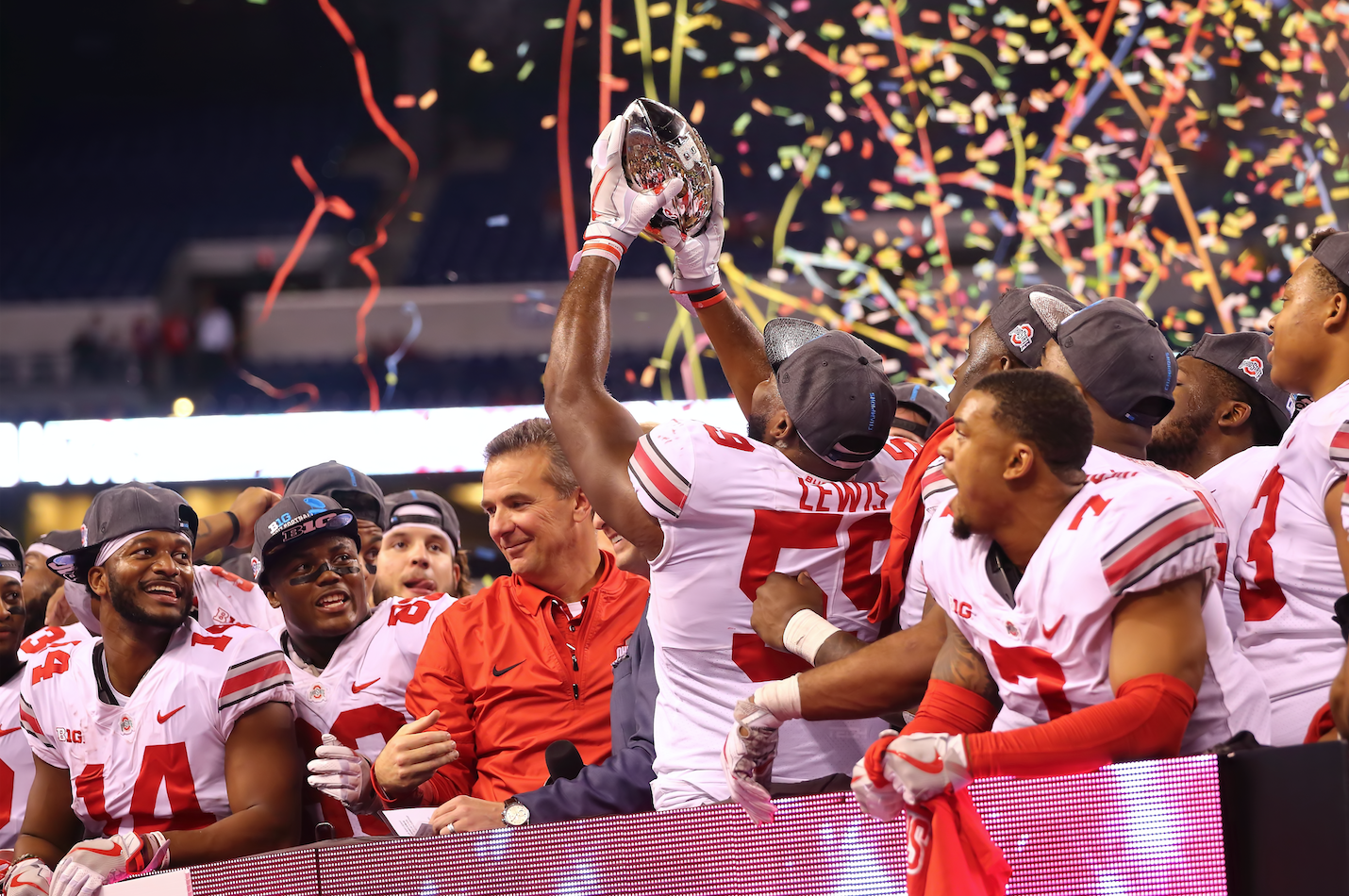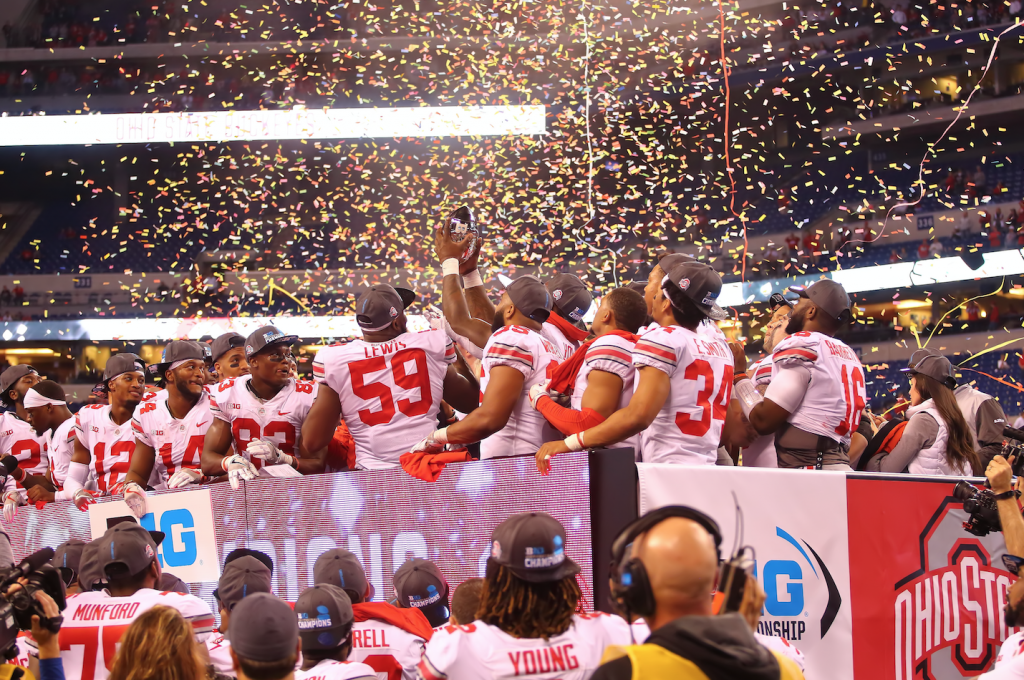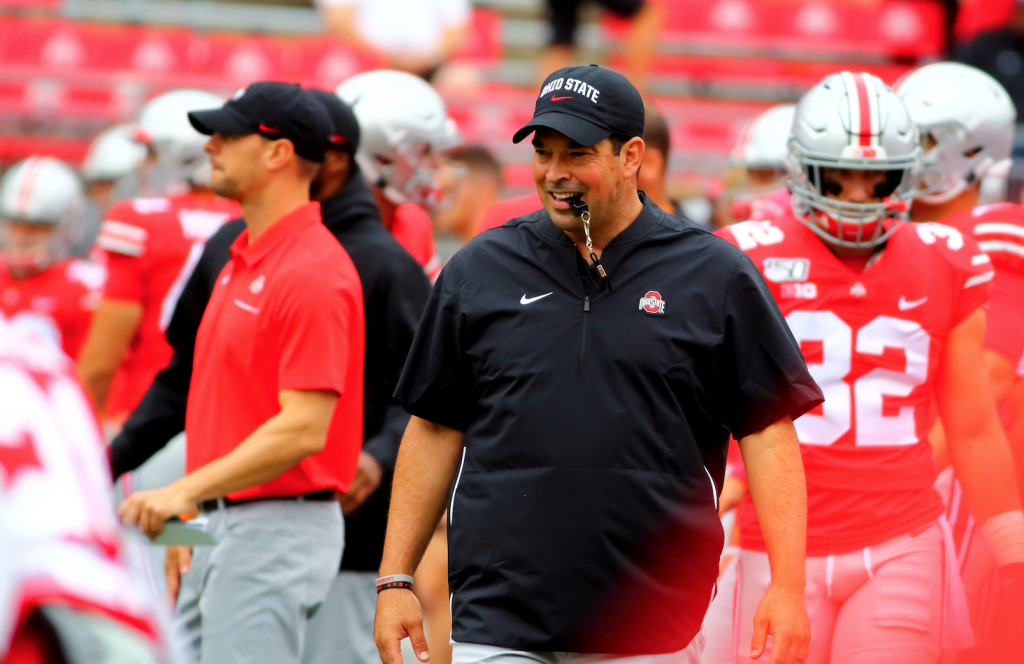Decade in Review: Ohio State Football

Have the 2010s been the best in Ohio State football history?
When you’re in the midst of an athletic dynasty, sometimes you have to stop and smell the roses. The Ohio State football team has been on a tirade over the last 10 years, winning multiple Big Ten Championships, sending top-tier talent to the NFL, and of course bringing home a National Championship. Each season somehow exceeds last season’s expectations and now it seems every year is championship or bust. As we enter into another decade of Buckeye football it’s worth asking: has this been the best decade to date? In this case, hindsight is 2020, literally.

The first year of the new decade certainly didn’t predict the future. Following then-head coach Jim Tressel’s resignation amid the Tattoogate controversy, Luke Fickell was brought in as head coach in 2011 where the Buckeyes would finish the season 6-7, dropping a game to Michigan at the end of the season as well as losing to Florida in the Gator Bowl. Shortly after one down year, Urban Meyer was hired as head coach in 2012 where he quickly got the team back on track. Twelve wins, no losses, and a handful of “what if’s” due to the lingering controversy causing a one-year bowl ban.

The years preceding 2012 have been something akin to a collective chip on the shoulder to all of Buckeye nation. The 2013 campaign started hot, but fizzled out with losses coming from Michigan State in the Big Ten Championship, followed by dropping the Orange Bowl against Clemson. And just when it seemed like the Buckeyes were in the prime position to run the college football tables in 2014, senior quarterback Braxton Miller went down with an injury that would cost him a season.
How did the Buckeyes respond? Resoundingly.
Though the 2014 season holds a blemish with a home loss to Virginia Tech in week two, this squad went on to do the unthinkable. They dominated the Big Ten and found themselves in November just one game against Michigan away from a second year in the Big Ten Championship, and maybe even a shot in the first ever College Football Playoff system. Just like the beginning of the season, the team faced a test of overcoming an injury. JT Barrett, who would go on to become one of the most decorated quarterbacks in Ohio State history, was injured, and the Buckeyes were down to their third-string quarterback as they prepared for the biggest games of the season. The Bucks would go on to win the battle against the Wolverines, but the season-long war was back up in the air.
And again, the team responded. Cardale Jones, a redshirt sophomore quarterback, stepped into his role tremendously as the Buckeyes would go on to rout Wisconsin in the Big Ten Championship, upset Alabama in the first round of the playoffs, and defeat Oregon to secure the first ever title of Undisputed National Champions.
BROUGHT TO YOU BY
Since then, the times have been good to Buckeye nation, aside from a few dropped games here and there. Sure, fans would like to forget those anomaly games like Purdue’s major upset against then-ranked No. 2 Ohio State. But the numbers don’t lie when you look back. Though Meyer’s stint as head coach was only seven seasons, he was able to secure three Big Ten Championships. And he never lost to Michigan, a badge no other Buckeye coach can wear. He also holds one of the highest win percentages of any Ohio State coach; second to current coach Ryan Day, whose sample size is still growing with only one year under his belt. In the past 25 years of Buckeye football, they have been able to achieve 16 seasons with 11 wins or more—seven of those seasons occurred during the 2010 decade. Additionally, the Buckeyes have been in the playoffs twice; a feat that no other Big Ten team can claim.
This doesn’t even begin to include the talent being drafted into the NFL each season. Let’s compare the 1970s to now. The ‘70s are widely accepted as one of the best decades in Buckeye football, with the ship being guided by legendary head coach Woody Hayes. Through that decade, the Buckeyes put 16 first-round draft picks in the league. In this last decade, the Buckeyes have put 15 first- round draft picks in the league and the 2020 NFL Draft hasn’t even happened yet. With names like Chase Young at the top of many expert’s boards, barring any unfortunate injuries, it’s safe to assume they’ll exceed that number.

Through all of these good times comes the cost of winning, and Ohio State seems to find itself at the center of many controversies over the last decade. The aforementioned Tattoogate in 2010 led to the third-winningest coach in OSU history’s resignation and a two-year probation. It also led to all the wins from the 2010 season being vacated. Former university president E. Gordon Gee stepped down in 2013 after insensitive comments relating to the University of Notre Dame and Catholicism. JT Barrett found himself the center of attention after being arrested for trying to avoid a DUI checkpoint in 2015. And while Meyer’s feats as head coach were impressive, the controversy that came with the Zach Smith domestic violence debacle created a cycle of events that eventually led to Meyer stepping down as head coach following the 2018 season. Toss in Chase Young’s recent run in with a loan and the NCAA handing out a suspension and it seems each season has two storylines: what happened on the field, and what happened off the field.
Truly, the cost of winning for the Buckeyes has been high. It seems each controversy could have led to the end of the dynasty, but instead, it seems the Buckeyes are able to reload much like the football team does on the field each year. Tressel was the third-most winningest coach in history; how do you replace him? Well, you do so with the second-highest win percentage coach in history. And if Day’s instant success as coach is any sign of the future, the next 10 years have all the potential to be even better.
BROUGHT TO YOU BY





